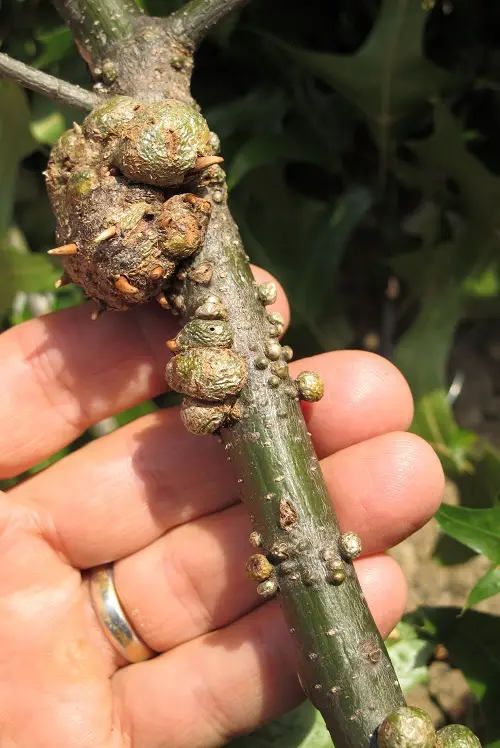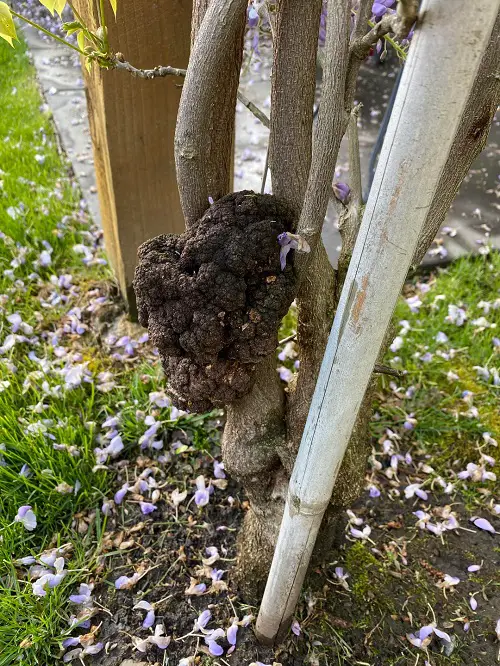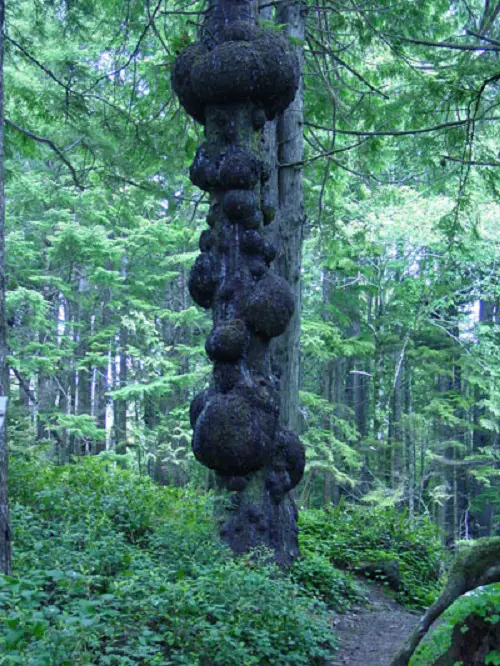Can tumors actually affect your plants? Here’s the truth about Plant Cancer, how to spot it, and what to do next!
The word “cancer” really puts the darkest thoughts in our minds! Amongst humans and animals, it is a truly devastating condition marked by invasive cell growth and quite a grim prognosis. But can plants get cancer, and do they suffer alike? Let’s investigate.
Can Plants Get Cancer?

Yes, plants do get cancer, but it is different! How? To understand what happens with plants, let’s first look at how cancer works. In both plant and animal cells, DNA mutations can cause cells to divide and multiply rapidly and uncontrollably, leading to what we call cancer. In animals, these affected cells can spread throughout the body, impairing multiple organ systems and their functions.
Now, plant cancer doesn’t look the same as in humans and animals. Their cells become disorganized and start dividing rampantly, usually because of bacterial, viral, or fungal infections or even due to structural damage.
However, plant cells have walls that keep them from getting too big or spreading all over (metastasizing) as animal cancer cells do, which is what kills! Also, plants can still survive even if a tumor destroys one part of them, such as a few leaves or a stem. But it isn’t the same with humans and animals since we can’t survive without a brain or liver!
Plant tumors can still seriously mess with normal functions and growth. So, let’s take a look at different types and how to spot them.
Types of Plant Tumors
Now that we’ve explored the ifs and hows of whether plants can get cancer let’s see what these tumors are. Often, pathogens such as fungi and viruses cause infections that upset plant hormone levels and cause abnormal cell division. Here are the most common types of plant tumors and ways to identify them.
1. Galls

Galls are distorted, beady swellings that appear on roots, stems, and leaves and are caused by insects, bacteria, mites, nematodes, and fungi. When insects like gall midges and mites feed or lay eggs, they can irritate and trigger the plant to produce higher amounts of growth hormone.
This leads to galls, which can keep growing. The organisms that caused it may continue to feed and grow within these protrusions. These galls steal the plant’s nutrients, hampering its healthy development. Spindle tree, oaks, rose, willows and fruit and nut trees are common hosts for this condition.
2. Crown Gall

Also a type of gall, knobby lumps form at the base of the plant where the stem meets the roots, and is caused specifically by Agrobacterium tumefaciens. Infected plants will likely get stunted, weak, and stressed, especially when young.
While it may appear normal on the outside, when you cut the bark of an infected tree, it will be softer inside and without the typical concentric grow rings. This bacteria can exist in the soil for a long time and affect nearby plants as well.
3. Burls

Rounded outgrowths emerge on tree trunks and branches. They grow slower than galls and are caused by injury, stress, or disease. However, they are quite sought-after by woodworkers and craftsmen who use these unique patterns in their works. You will mostly find burls on redwoods, oaks, maples, and cherry trees.
4. Witches’ Broom

Clusters of twigs, branches, and shoots clump up and start growing together, resembling a witch’s broom. Caused by fungi, viruses, and mites, this dense knot keeps growing year after year until the shoot dies due to disruption of the vascular system.
This condition is common in trees and shrubs like sycamore, birch, hackberry, and roses.
5. Fasciations

When stems appear extra large, flattened, or abnormally twisted, or fruits produce strange growth, these malformations are called fasciations, and the bacteria Rhodococcus fasciens is largely to blame! This type of growth can occur in all types of vascular plants, including cacti and succulents.
6. Clubroot

This disease is triggered by a soil-borne pathogen that causes roots to swell up and become club-shaped. Eventually, it leads to stunted growth and wilting and is particularly common amongst brassicas like cabbage, broccoli, and cauliflower.
How Do You Deal With Plant Tumors?
So, how worried should you be? While these tumors aren’t life-threatening, they do interfere with your plant’s well-being. And, of course, prevention is better than cure. So that’s how we’ll approach these anomalies.
Once plant tumors develop and establish, they can be quite a pain to get rid of. Start being vigilant from the time you buy your plant babies, and look out for any strange marks, protrusions, shapes, or patterns.
Maintain good hygiene to prevent pathogens from taking over. After using pruning tools on tumor-infected trees, disinfect them every single time with a 10-percent solution of household bleach. Prune regularly, especially the funny bits.
Affected plants and trees are more susceptible to damage from the cold or drought; sometimes, secondary diseases may inflict the plant through the cracks in the tumors. In such cases, cut off the tumors before they spread or touch other plant parts.
Also, pick disease-resistant plant varieties and ensure proper soil drainage and airflow. Avoid planting susceptible plants, like roses, willow, and poplar, in a landscape with gall-infected plants.
Plant diseases can be scary, but remember that there are always ways to deal with them. If your plants ever get tumors, follow the steps above.


